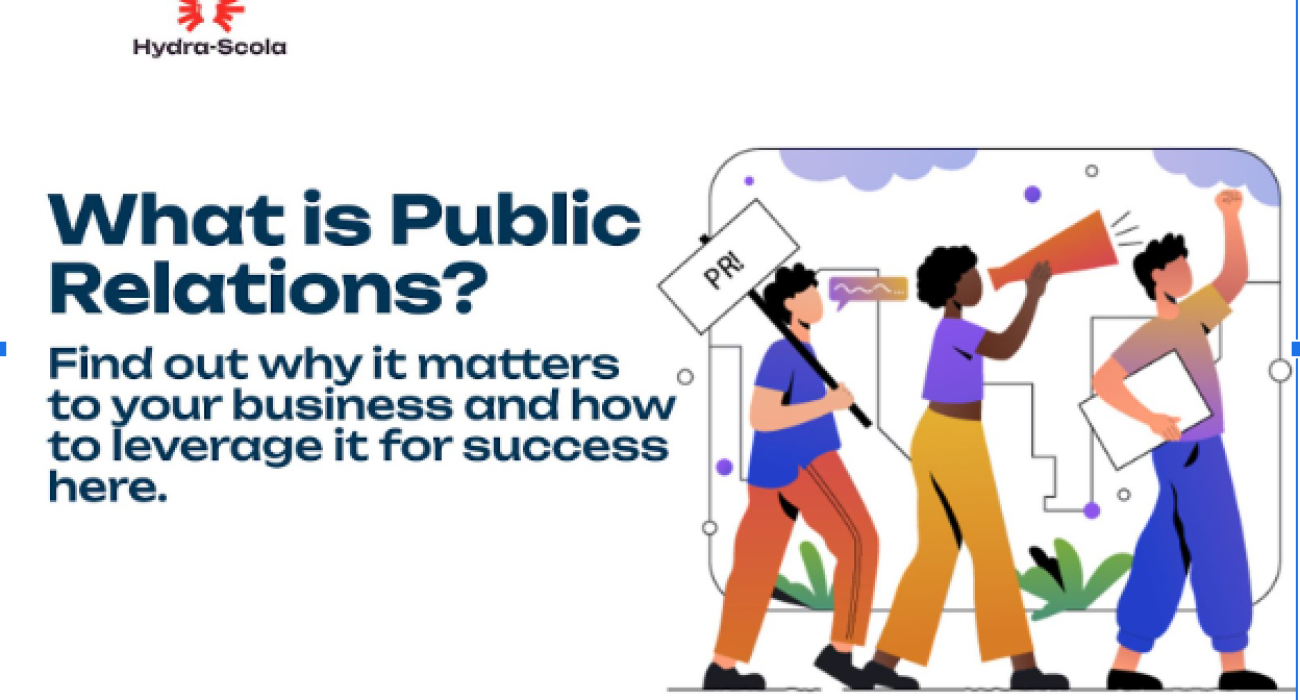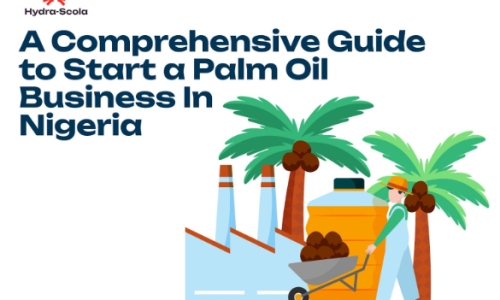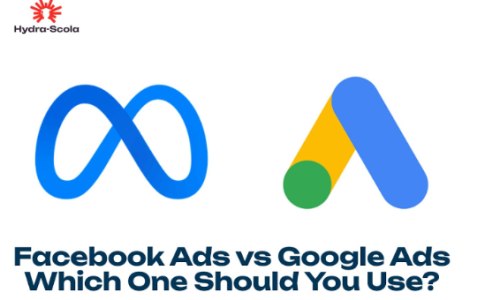Table of Contents
ToggleOne of the secrets to a thriving business is strong public relations (PR). PR involves putting your business in the best light possible and actively managing the situation when crises or complaints arise.
With good PR, businesses can maintain a positive reputation, keep existing customers proud, and attract new ones without relying on large advertising budgets.
However, many businesses struggle to get PR right. They might send out countless press releases or spend a fortune getting their name in the news, but that’s not what effective PR is all about.
Let’s take a thorough look at the world of PR and see how you can fine-tune your PR strategies to build a stronger, more positive presence for your brand.
What is Public Relations?

In its simplest form, public relations involves creating and maintaining a favourable relationship between a company and its publics.
These “publics” can include employees, customers, investors, the media, government agencies, and the general public.
As earlier pointed out, PR is more than just sending out press releases or getting media coverage. It’s the practice of managing and improving a business’s image and reputation through strategic communication with the public.
PR shapes how a brand is perceived and makes sure it stays aligned with the business values and goals.
“Public relations is the deliberate, planned, and sustained effort to establish and maintain mutual understanding between an organisation and its publics.” – Chartered Institute of Public Relations, UK
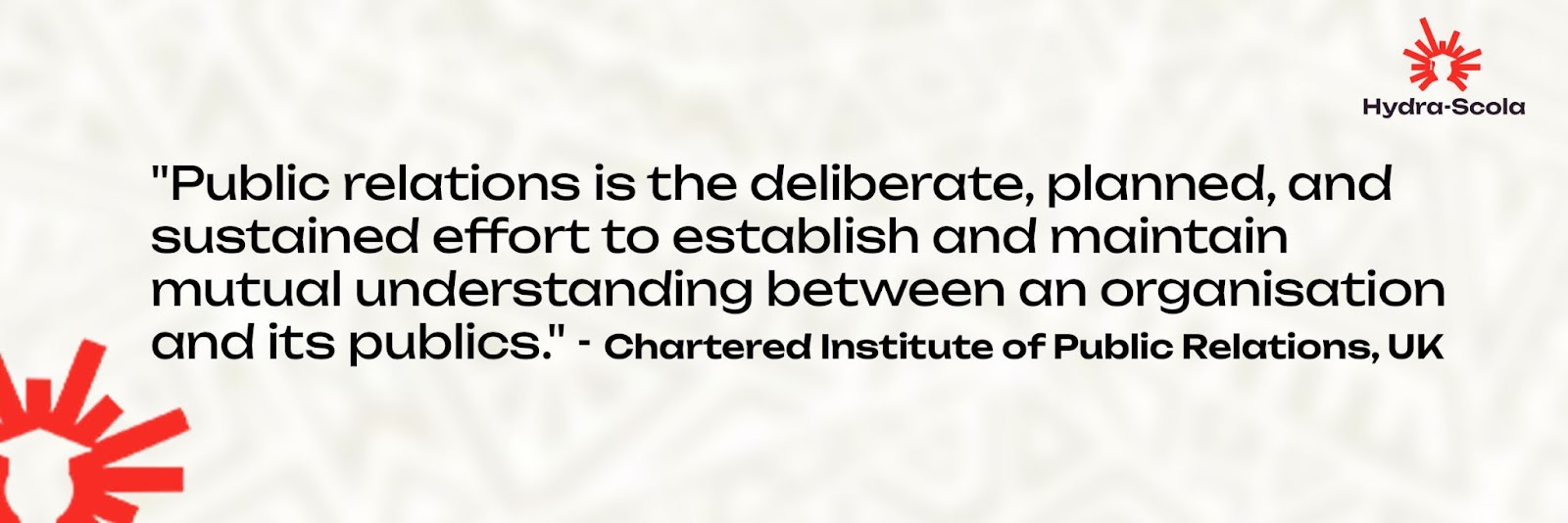
Why PR Matters to a Business
If you’re a business owner, you might be wondering: Why invest in PR? The truth is, public perception can directly impact your business success.
Here’s how PR benefits your business:
PR helps businesses to:
- Build and maintain a strong, positive reputation.
- Build trust and credibility among customers.
- Manages crises when they occur.
- Promote brand awareness and ultimately generate income. (An example is how Tesla spends $0 on traditional advertising but gains millions in free PR through Elon Musk’s tweets and media coverage.)
- Spend less on ads.
Just imagine how your business will be with all of the above properly put in place. That’s the job of good PR.
Despite its effectiveness, public relations was not always widely known. Let’s take a look at how it came to be an important tool in business by tracing its origin.
Origin of PR
What is practiced as PR today evolved through different stages. Let’s take a look at these stages one after the other:
PR in Its Earliest Forms
The roots of PR can be seen in early civilisations, where the Egyptian Pharaohs, Roman Emperors, and Greek Leaders used communication strategies to shape public opinion.
They used speeches, statues, and writings to control their public image. Julius Caesar, for instance, wrote commentaries about his military campaigns to gain public support (this is an early example of media relations in action).
PR in the 18th and 19th Centuries
As time went by, communication extended beyond word-of-mouth when the printing press was invented in the 15th century.

With the invention of the printing press came the advent of newspapers, which became a force in shaping public opinion in the 18th and 19th centuries.
Businesses, political leaders, and organisations began using newspapers and other media to influence public opinion.
In the late 19th century, P.T. Barnum became one of the first to use PR tactics in his business by holding publicity stunts in his circus to generate excitement around his events.
PR in the 20th Century
The 20th century saw the birth of professional PR, which we know PR to be today.
This came into place with the help of two key figures—Ivy Lee and Edward Bernays, who shaped modern corporate PR.
Ivy Lee advised businesses to communicate openly with the public, setting the foundation for corporate public relations. While Edward Bernays applied psychology to PR, shaping public opinion through strategic messaging.
For example, he created a campaign for Lucky Strike cigarettes where he branded cigarettes as “Torches of Freedom”. This move was effective in encouraging women to smoke to be “free”.
PR in the 21st Century
Today, PR has expanded beyond traditional media to include social media, influencer marketing, and content marketing.
The most effective PR campaigns now combine traditional and digital media by mixing press releases, press features, social media engagement, and influencer collaborations to create a buzz and increase brand visibility and customer engagement.
Today, modern PR involves the strategic combination of traditional and digital media for brand success.
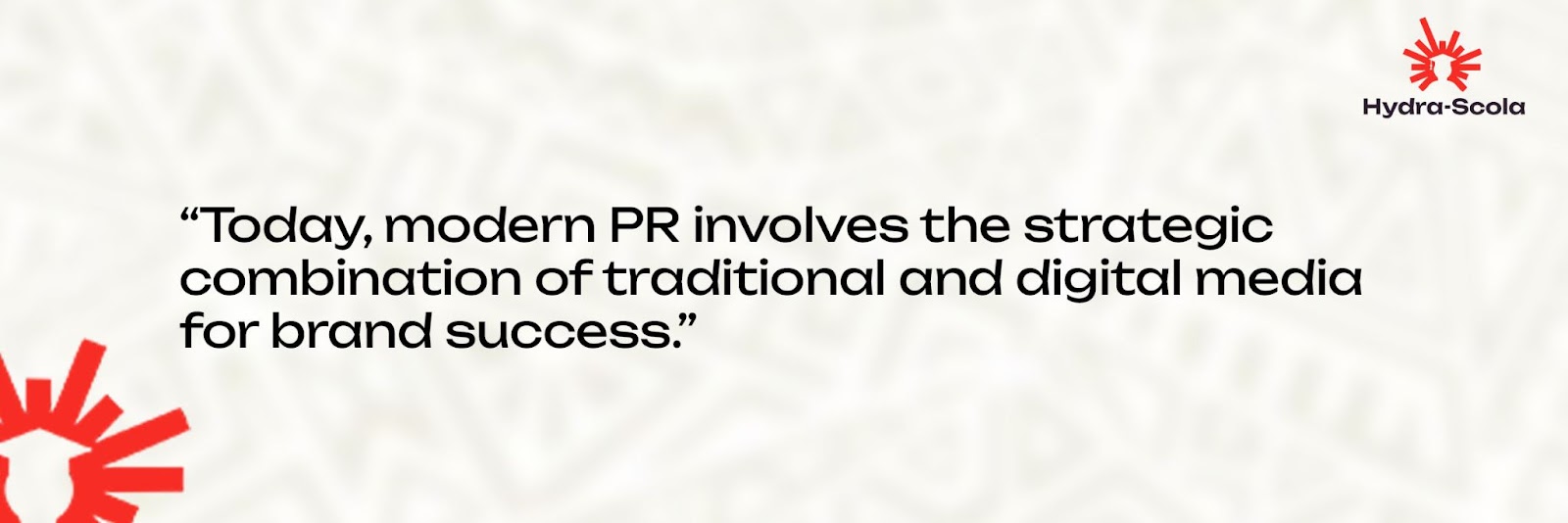
How You Can Leverage Effective PR in Your Business
PR is a strategic tool that you can use to grow your business cost-effectively. There are different forms of PR that you can implement in your business for growth.
This includes:
- Media Relations: This involves building relationships with journalists to earn positive media coverage.
- Corporate Communications: This is managing your company’s internal and external messaging.
- Crisis Communications: Involves handling reputation damage control in times of crisis.
- Community Relations: Engaging with local communities to build trust and goodwill.
- Influencer & Digital PR: Leveraging influencers, bloggers, and online platforms for brand awareness. This is very common today on social media.
- Internal PR: Ensuring employees are aligned with the company’s vision and values.
- Public Affairs & Government Relations: Communicating with policymakers and stakeholders on regulatory issues.
- Event PR: Promoting events to attract attendees and media attention.
Now, let’s demonstrate how you can leverage the different forms of PR in your business through a simple PR campaign.
A Practical PR Campaign Strategy
We’ll be working with this scenario:
A new organic skincare brand, GlowNaturals, launches in Lagos and wants to break into a highly competitive market while building trust with potential customers.
Using most of the forms of PR mentioned above, here’s how they can use PR to achieve their goals:
1. Press Release & Media Outreach:
GlowNaturals can kick off its PR campaign by crafting a compelling press release announcing its launch. This will highlight their brand story, unique selling points (natural ingredients, eco-friendliness), and an upcoming launch event.
This press release will be distributed to beauty bloggers, online magazines, and business websites.
2. Influencer Partnerships:
The next step would be to partner with popular beauty influencers on Instagram and TikTok to create content about their products.
These kinds of posts are what is known as “user-generated content”.
The influencers will share their skincare routines using GlowNaturals’ products while directing followers to the brand’s website.
Think of how many times you’ve seen something like this on Instagram; that’s PR!
3. Community Engagement & CSR Initiative:
To build goodwill, GlowNaturals will organise a free skin care awareness workshop in Lagos, educating attendees on proper skin care practices and offering free samples.
The goal of this will be to create positive word-of-mouth but also earn media coverage from local news outlets.
4. Social Media Buzz & Hashtag Campaign:
The next move will be to launch a campaign with the hashtag #GlowNaturalsChallenge, where, for example, customers are encouraged to share their unboxing of GlowNaturals products on video via social media and stand a chance of winning a certain amount of money or free products.
This is another set of user-generated content that will boost their brand credibility and organic reach.
5. Crisis Management & Reputation Monitoring:
Finally, the brand will be on the lookout for any complaints that could negatively impact its growth.
For example, if a customer complains about a reaction to a product, the PR team will quickly address the concern with a personalised response, offer solutions, and reinforce their commitment to customer satisfaction.
This ensures that potential PR crises are managed before escalating.
Through this well-planned PR campaign, GlowNaturals successfully:
- Gained media coverage in top Nigerian beauty blogs.
- Builds brand trust with influencer testimonials.
- Engages potential customers through community initiatives.
- Drives social media engagement with a viral hashtag.
- Establishes a strong online reputation by managing customer concerns effectively.
Did you take note of all the PR strategies that went into deriving these benefits for our imaginary brand?
Let’s use them to come up with a working guide to create an effective PR campaign for your brand, regardless of its size.
Steps to Create an Effective PR Campaign
1. Define Your Goals
Determine what you want to achieve with your PR campaign. This can be
- Increasing brand awareness
- Managing a brand crisis
- Launching a new product/service
- Boosting customer engagement
- Positioning your brand as an industry leader
2. Identify Your Target Audience
Who are you trying to reach? Your campaign should be tailored to a specific audience, considering factors like
- Demographics (age, gender, location)
- Interests and behaviours
- Preferred media channels (social media, TV, blogs, newspapers, etc.)
3. Craft a Compelling Message
Your message should be clear, concise, and aligned with your brand’s values. Focus on:
- A strong brand narrative (why should people care?)
- The unique selling points of your brand or product
- Emotional and relatable storytelling
4. Choose the Right PR Channels
Select the best channels to distribute your message based on your audience. You can use any of these channels depending on your campaign objectives:
- Traditional media: Newspapers, TV, radio
- Digital media: Blogs, websites, online news platforms
- Social media: Instagram, Twitter, LinkedIn, Facebook, TikTok
- Influencers & industry leaders: Collaborate with credible voices in your niche
5. Develop Engaging PR Materials
Prepare high-quality content to support your campaign, such as:
- Press releases
- Blog posts
- Social media content
- Videos and infographics
- Interviews and guest articles
6. Build Relationships with the Media
Journalists, bloggers, and influencers can amplify your message. To get their attention:
- Personalise your pitch (don’t send mass emails)
- Provide value (exclusive information, expert opinions, etc.)
- Follow up respectfully without spamming
7. Leverage Social Media & Online Engagement
Do this by:
- Posting engaging content
- Using relevant hashtags and trends
- Running contests, live sessions, and Q&As
- Encouraging user-generated content
8. Monitor and Measure Results
Track your campaign’s performance to see what works and what doesn’t. Here are some key parts of your campaign to track:
- Media coverage (mentions, shares, backlinks)
- Social media engagement (likes, comments, shares)
- Website traffic and conversions
You can use analytics tools like Google Analytics or Hootsuite to track your campaign’s progress.
9. Adjust & Optimise
Based on your results, tweak your strategy to improve effectiveness. If a certain platform or approach isn’t working, shift your focus elsewhere.
10. Maintain Long-Term PR Efforts
Your PR campaign shouldn’t be a one-time effort. So, keep engaging with your audience, building media relationships, and reinforcing your brand message over time.
Key Benefits of PR to a Business
Some benefits of using PR in your business include:
1. PR helps establish trust and authority by securing media coverage and positive public perception.
2. A well-executed PR strategy puts your business in front of the right audience, increasing visibility.
3. PR ensures that your brand maintains a positive image, especially in times of crisis.
4. PR complements digital marketing and advertising by adding authenticity and credibility to your campaigns.
5. A strong PR presence can make your business more appealing to investors and potential partners.
6. PR helps businesses connect with their audience through compelling storytelling and strategic messaging.
7. Earned media through PR offers long-term brand exposure with lower costs than paid advertising.
The beauty of PR is that whether you’re a small startup or a multinational brand, you can use effective PR to shape your brand’s image and increase your business success.

Final Thoughts
PR has come a long way in shaping and promoting companies to ensure growth.
By effectively implementing PR strategies in your business, you can build and maintain a good reputation and achieve your business goals.
Want to learn more about other marketing strategies that can give your business a boost?
Visit our blog at Hydrascola to access valuable insights and resources on marketing, tech, and more!
- Godwin Shaibuhttps://www.hydrascola.com/blog/author/godwin2222/
- Godwin Shaibuhttps://www.hydrascola.com/blog/author/godwin2222/
- Godwin Shaibuhttps://www.hydrascola.com/blog/author/godwin2222/

